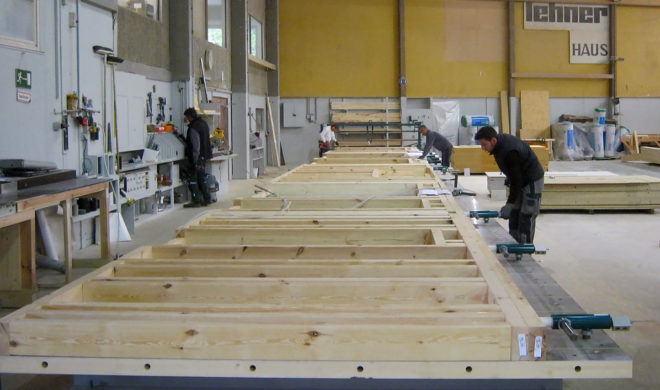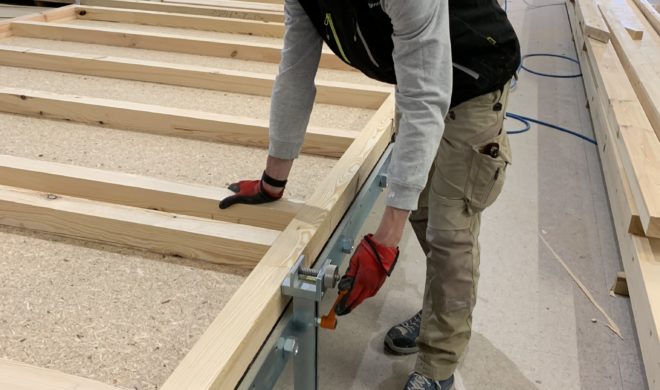Stationary Workplaces Work Best
The Lehner GmbH from Heidenheim relies on stationary workplaces in their newly equipped plant that combine many production steps in one place.
Mikado, Ausgabe 09 2019
Automatic Google-Translation from the German Original:
The increasing order situation in timber construction is putting more and more pressure on prefabrication to increase production. So far, attempts have been made to deal with this situation with increasing industrialization and to push elements on rollers from station to station in the form of a production line. For many companies, however, this was not the right approach and would not have achieved the necessary results. The example of Lehner Haus GmbH from Heidenheim shows how it can be done differently. There, the prefabrication was used. Stationary workplaces are worthwhile The Lehner GmbH from Heidenheim relies on stationary workplaces in its new factory hall, which combine many production steps in one place. Refurbishment of the original factory hall on stationary workplaces, which should combine (almost) all work steps of the production in one place, instead of splitting them up further.
Lehner Haus GmbH was founded in 1963 and today produces around the same number of single-family houses annually with around 100 employees. Most of them are turnkey, in some years also increasingly in property construction. The company, which originally worked as a carpentry shop, got into timber frame construction early on and tried even then to introduce certain industrial principles. Originally in Burgberg, later also in the new plant in Heidenheim, which today also houses the company headquarters and the entire planning. Both produce around half of the total construction volume.
Flow production like in the auto industry
As a relatively young branch of the market, which grew out of medium-sized companies and is characterized by trade and its structures, timber frame construction was toying with industry from the very beginning – especially with the flourishing automotive industry in Germany. The principles of flow production, which have been successfully applied there for decades – a division and thus the rationalization of the individual work steps in several stations – were also wanted in timber frame construction. That is why at Lehner’s Burgberg plant, for example, butterfly turning tables were purchased to split the first and second side machining. About 30 years ago, next to the main factory in Burgberg, a new production location was opened in Heidenheim, where the principle of assembly tables for moving the elements was further developed.
New Plant Equipment
The Advantages of Stationary Workplaces at Lehner GmbH
Production processes for the new plant
When the Burgberg plant began to be renewed in 2018 with its assembly table equipment, the entire production strategy was rethought. Herrmann Beratende Ingenieure GmbH was commissioned to analyze the internal work processes in more detail and to find rationalization options. Then the decision was made to concentrate the beam exclusively in the Heidenheim plant, which has a K2i from Hundegger. It was decided not to purchase nail bridges. For managing director Thomas Lehner, the modest gain in efficiency for the only operation of nailing was in no relation to the acquisition and maintenance costs of such a system. Even a multifunctional portal, which also takes over the cutting of the panels, was not seen as economical, since several portals would have to be purchased for the various stations in terms of utilization. However, there was an advantage in delivering the sheet material cut directly to the workstations instead of cutting them to size at each station. For the plant in Burgberg, which is to take on this task for both plants, an SPM2 from Hundegger was purchased, which has been in operation since the beginning of the year.
The already cut raw material should then only be assembled at the assembly tables. And that is precisely what they thought about in the course of the renovation and decided to completely change the previous production method.
Flow production with cycle time losses
A precise analysis of the production processes showed the weak points of the flow production and the turning of the elements by butterfly turning tables. “Since we always have batch sizes of 1 in timber construction, we never come up with orderly cycle times,” says Thomas Lehner, explaining the results of the internal study by HBI. So you always have to struggle with cycle time losses. “This means that the teams are never finished with the respective work steps at the same time or in a predictable manner, and waiting times arise each time the element is handed over to the next team.” In one case, it was even observed that one team worked consistently more slowly because the next team did not anyway would be ready for delivery. “From a user perspective, that’s understandable,” says Lehner, “but from a business perspective, of course, it’s a disaster.”
Since we always have batch size 1 in timber construction, we never come up with
Thomas Lehner | CEO Lehner Haus GmbH
orderly cycle times. Thus, the teams are never finished at the same time and each time
the element is handed over to the next team, waiting times arise.
The same applies to turning the elements with a butterfly turner. “We only need around six to seven minutes for a complete process,” explains production manager Jürgen Straub. “In reality, four men from two teams are waiting while one of them operates the crane. A total of almost 30 working minutes are lost. ”So there were really good reasons why Lehner GmbH abandoned the well-known principle of flow production and Jürgen Straub started looking for a new, innovative solution for stationary workplaces.
Stationary concept with modular workstations
The long-time production manager at a Swiss machine manufacturer found what he was looking for. Woodtec Fankhauser GmbH has long known the advantages of stationary workplaces. Although the company optionally offers a hydraulic substructure for tilting its element construction tables, the original plans for butterfly turning tables were quickly shelved. “The turning tables take up too much production space and the hydraulics are too expensive,” explains managing director and founder Thomas Fankhauser. “Turning on the crane hook is and remains faster.” In the meantime, more than 350 companies work on a Woodtec element construction table and benefit from concentrating the work steps in element production on one station per element.
“Many of these companies have grown rapidly over the years and over time the question arose for many of how to cope with the increasing production volume,” explains Fankhauser. Of course, there are also discussions about flow production, but his company has successfully opted for the stationary concept with modular workstations. A big advantage of the modular table is the fact that there are no fixed sizes. The table is delivered in modules of 1.5 mx 3 m and assembled into tables of any size. If you want to set up additional workstations, the existing table is extended by a few modules. Table subdivisions can be attached in the perforated grid of the modular table in order to divide the table into any number of large workstations.
“For example, you can create two large outer walls or three to four small inner walls in parallel on an 18-meter table,” explains Fankhauser. The elements are each assembled at the same station, planked on the first side, turned on site with a crane, insulated and planked on both sides. On the one hand, the optimized division of the production area saves acquisition costs; on the other hand, the parallel working method prevents waiting times between teams and shortens the handling times of the element. Another advantage: the teams don’t have to read each element plan again and again, but have the entire production from A to Z in view. “We see a clear trend from many companies that are based their prefabrication on this concept,” explains Fankhauser.
The parallel way of working prevents waiting times between teams
and shortens the handling times of the element.
Space savings and handling are further positive factors
At Lehner Haus GmbH, a table of 22.5 m has been purchased for the production of exterior wall elements, which can be divided into two or more stations. This is set up along one side of the hall and is in line with a smaller table of 10.5 m for interior walls. On the opposite side of the hall, the ceiling and roof elements are manufactured on two tables standing one behind the other. At Lehner, the tables are separated according to element type. Thanks to the modular system of the tables, this adjustment can be changed at any time if this could prove advantageous. “We are seeing that some companies are changing our flexible facility at short notice. For certain objects, a different production method is more optimal – you are happy not to be tied too closely to a permanently installed facility, ”says Fankhauser. Production manager Jürgen Straub is of the same opinion. Flexibility was an important reason for choosing the Woodtec system at Lehner. “If, for example, we have to manufacture higher elements, the table above can be extended with a few modules or a corresponding widening, depending on the object,” he explains.
Great potential for increasing efficiency
He also sees a great advantage in saving space. Each element is manufactured on its own station. Only the outer walls are positioned vertically for painting and installing windows in another part of the hall. All the material that has already been cut is stored right next to the station, with an access path for the forklift truck in the middle. “The old facility took up so much space that we had to bring the material in using an indoor crane,” explains Straub. “Although we now need the crane to turn the elements, the bottom line is that it is less manned than before.” In general, he sees great potential for increasing efficiency when handling the materials. He was won over by the selection of accessories on the element construction table, with which every work step can be optimized and which can be attached anywhere in the table thanks to the hole pattern. “The integrated measuring tapes are suitable for checking,” says Straub. “You can see immediately whether the stand and the element are at an angle.”
The profitability of the facility is crucial
People at Lehner GmbH are convinced of the new production method. The managing director confirms that the first results are very satisfactory. He is eagerly awaiting the longer-term results. Among other things, the somewhat more complex projects that are more out of the standard are supposed to be handled in Burgberg. The more flexible facility should pay off particularly well.
More News
Show All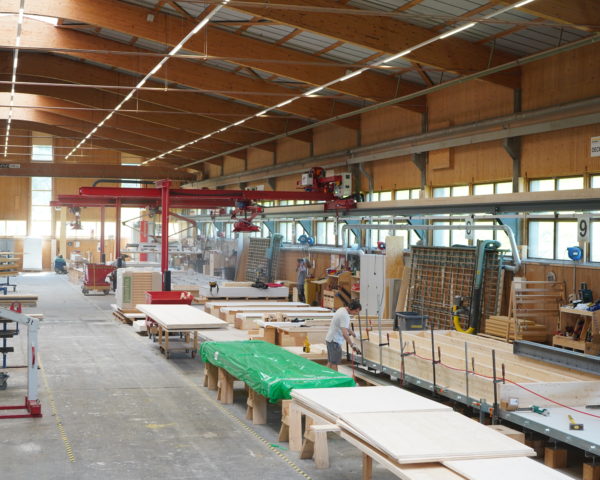
Prefab: Focus on Material Handling
The new production plant of Stuberholz AG does not score with fully automatic…

Stationary Workplaces Work Best
The Lehner GmbH from Heidenheim relies on stationary workplaces in their newl…
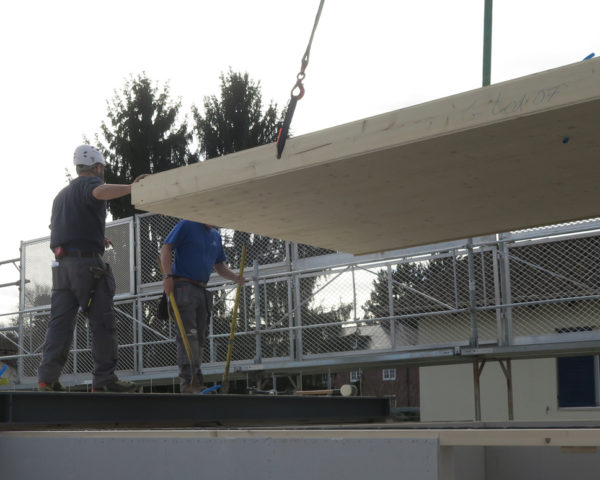
Added Storeys and Extensions
With increasing urbanization and the legislative measures against urban spraw…
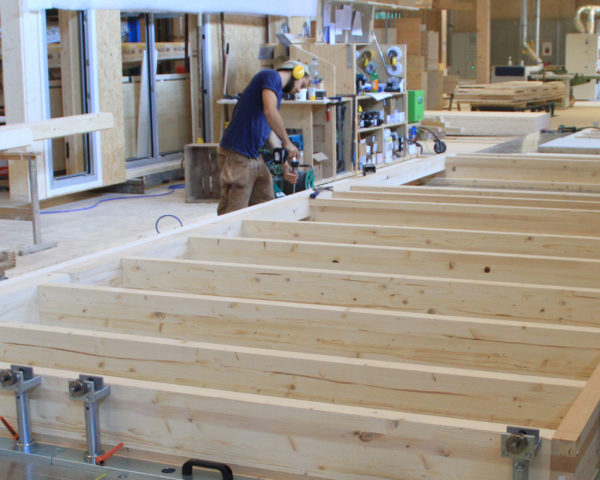
Frame Prefab with Manpower
Industry 4.0 is not necessarily synonymous with automation and automation has…

Prefabricate Roofs
A new trend could emerge in the manufacture of roof trusses.

Modular Prefab
The trend towards individual solutions in timber construction and constructio…
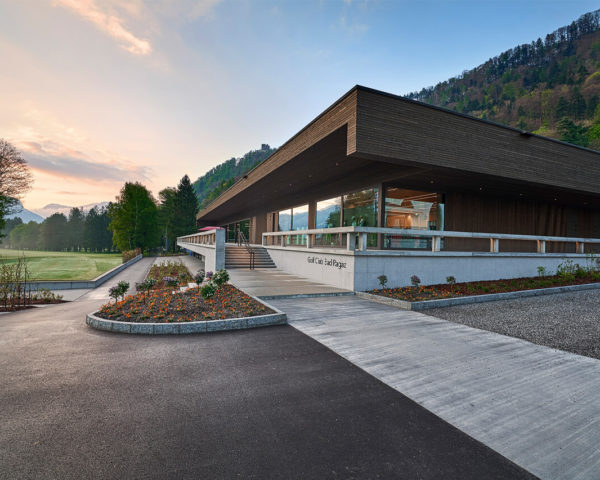
Glued Box Girders – Completely Without Screws
Glued box girders for roofs and ceilings with a larger span
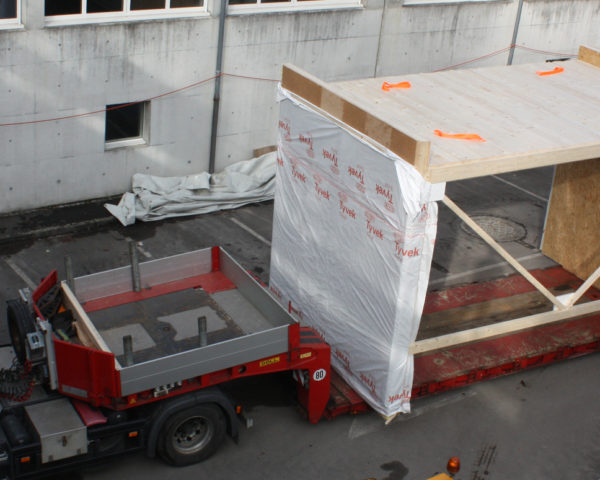
Timber for Athletes
Whether sprinting, hurdling, long jump or javelin throwing – thanks to ribbed…
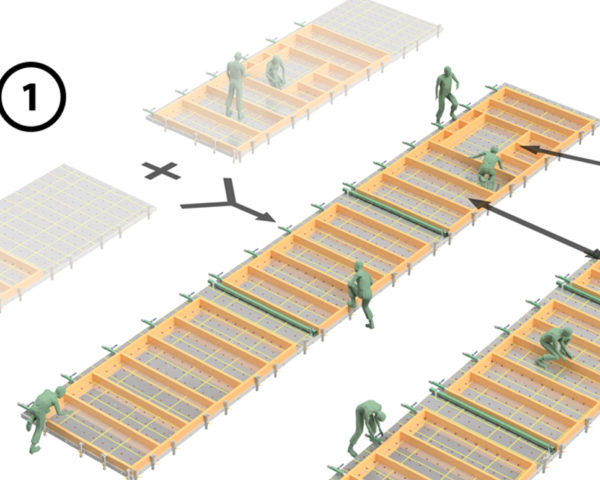
More Flexibility with Modular Workstations
The new concept for optimizing space, minimizing transport and material flow …


